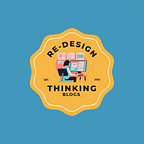The Design Philosophy of A Logo
A logo is a visual representation of who you are or what you do. There must be a purpose behind this. It should be something that draws them in. A successful logo virtually never says anything. A logo, in our minds, is something that can hold everything. It is influenced and reinforced by the things we see every day, and it is critical to recognise that full unseen lexicon.
Logos, in fact, date back to antiquity. It was a single image of something that was utilised as a personal expression. And they may have represented a notion, an idea, or even a product. Nobility, for example, might have shields, which are essentially sophisticated logos. Because not everyone was educated, graphic tools were used to overcome that illiteracy. Mosaics depicting traders may be found around ancient Rome. So if you see an elephant, it signifies someone has travelled to Africa, and if you see dolphins, it means someone is definitely trading in seafood. So all of these elements represented who the merchant was, and this is where the logo began.
Logos grew quickly as trade, industry, and technology advanced, and there was more and more rivalry. Logos have evolved from a highly Victorian to a very contemporary appearance, implying that they are more cost effective. As a result, logo designers must have a feel of what the company’s personality should be. A logo is an identity, but it is also a representation of who you are.
An excellent logo is memorable, relevant to the company, and basic enough to work everywhere and appear the same in every context. So the first element is simplicity, which in today’s media reality means that if it could be as little as sixteen by sixteen pixels to function as a save icon and for large signage on the sides of buildings, that would be fantastic. The second point is that it would be appropriate in terms of character and emotion. If you look at the Smithsonian Sun and ask yourself, “Is that acceptable for an institution with all of these various galleries and museums?” you may also wonder, “Does it appear too corporate?” It does not. Is it overly commercial? It does not. That’s what we’re thinking when we look at a symbol and wonder, “Is this the proper first for them?” Last but not least, it should be distinctive. And it’s usually something uncomfortable, something that knocks the equilibrium off. Mobil is a wonderful example. Tom Geisman was in command of it. He created these geometric letters, and the simple changing of the O to red made it stick in your memory. When a design meets these characteristics throughout time, it gains equity and recognition, and we want something that will seem fresh for a long time.
Logo design is not the same as maths. You never know what it will be until you get in there and start doing it. You should ideally have one concept that you and your customer both believe in and iterate on as much as possible. Then it was only a question of picking colours, different transparency levels, and interactions between the different pieces, and then it was just a matter of tweaking it.
The design of a logo should be timeless. Coca-Cola is a classic example. It is now just a part of our society. If a logo has shown to be effective and identifiable, and the firm has spent millions of dollars to advertise it, there is typically little incentive to alter it. It is a fashion company. There are styles that change, fonts that change, and pictures that change, but what you want is for your audience to see this and remember that entity. That’s where a logo comes in handy. When it reaches that point, it becomes timeless.
We need the logo so that people know who we are and what we do. The world has changed, and technology has advanced, but our attitude has remained consistent. It should be straightforward, well-drawn, and intriguing. A logo cannot represent everything, but it should express the most significant thing, the thing that needs to be expressed.
